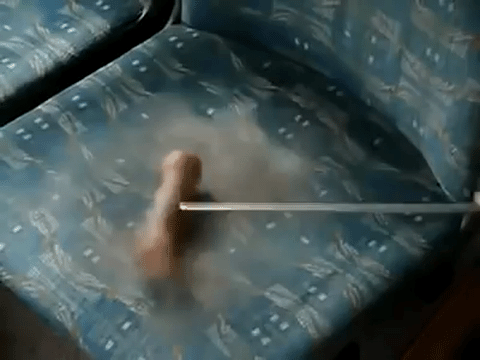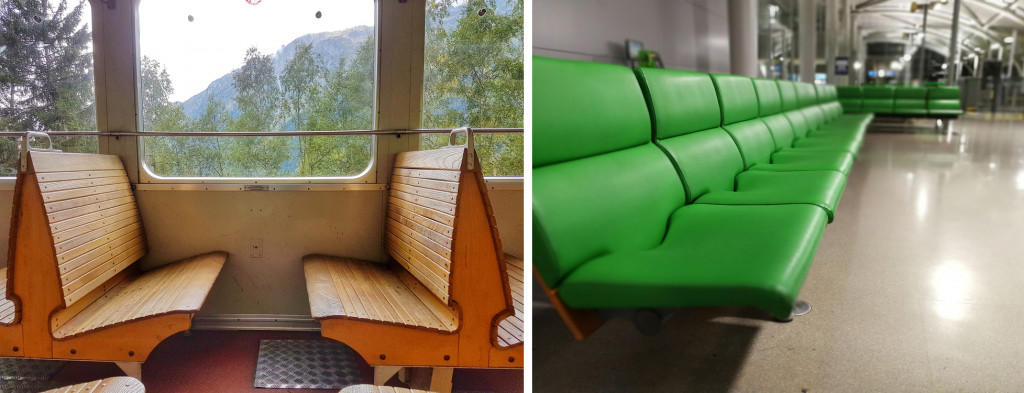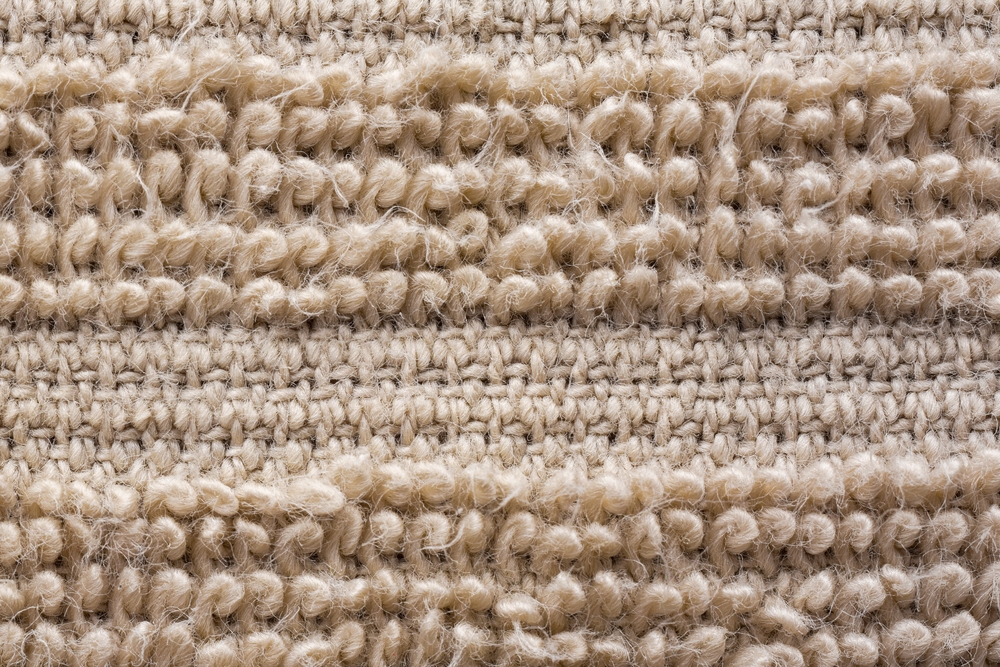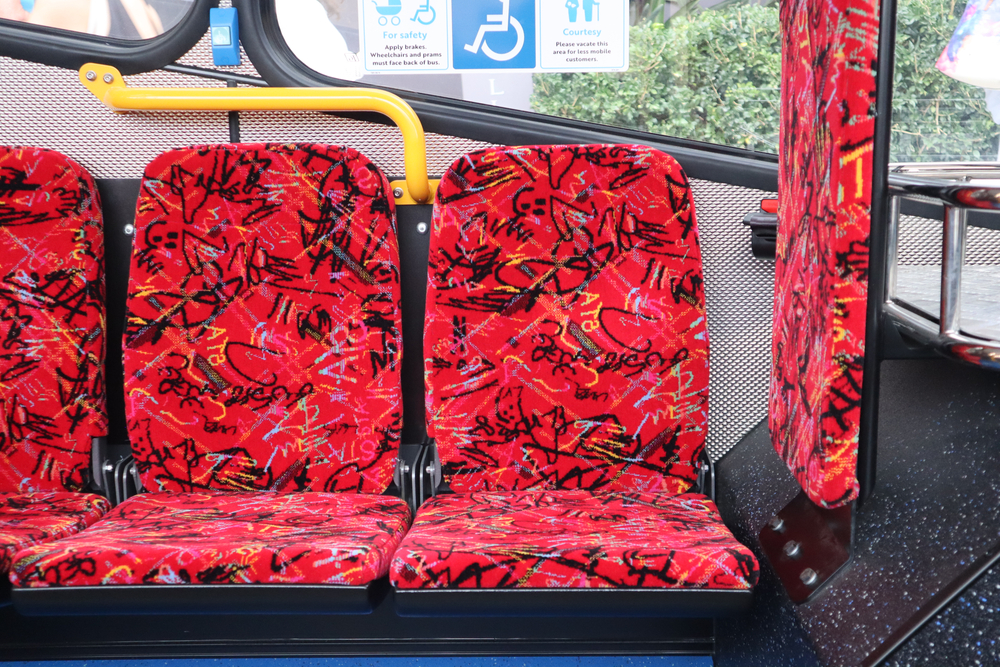Bus seats are made of a special fabric with unusual patterns because it helps them mask stains, wear and tear and look fresh without the need for much maintenance.
The spectrum of adjectives used for bus seats is broad. To begin with, most of us hardly take notice of the design of bus seats. Yet when we do, pleasing is not the first word that comes to mind. Mind bending, often hideous patterns are, however, characteristic to all forms of public transportation. Do bus companies cause visual anxiety for their passengers on purpose? Or do they really not have another alternative?
The Reason For Weird Patterns On Bus Seats
Before we get into this, here’s a little something for you to try. If you have fabric upholstery in your house, such as a sofa seat or a dining chair, try hitting it with a stick. What begins as a curious experiment will quickly turn into a cleaning chore, owing to the seemingly endless cloud of dust that will emanate from it. All of that is from just a few people using the furniture every day!

Now, let’s extend this example to the bus seat. A bus seat may see dozens or even hundreds of passengers every week, all year round. And if the public transport committee were to appoint someone to beat the seats with a stick, imagine the utter chaos that would ensue! To do away with the hassle of having to maintain public transport seats, an intelligent solution was adopted.
The weird, mind-bending patterns are designed to make the seats appear clean and unworn, even though they conceal a lot of dirt within those wild patterns. The secret lies in the type of material used to cover these seats.
Also Read: Why You Don’t Have To Wear Seat Belts In Buses?
Why Is The Seat Fabric So Special?
At first glance, it doesn’t seem like much thought goes into choosing textiles for upholstery in public transport. After all, how could something so mundane and unnoticeable warrant so much attention? As it turns out, this isn’t the case.
Public transport upholstery must serve a variety of functions. With the aesthetic side of things already spoken of, there are a few technical attributes it must also possess. The fabric should prevent propagation, or the spreading of flames in the event of fire.

It should be a breathable fabric that allows the passenger to commute in relative ease with respect to the prevailing climate. At the same time, it should be durable enough to not show signs of wear and tear if subjected to mishandling or vandalism.
The quest for finding the most commuter-friendly fabric led transport companies through many materials. While materials such as wood and artificial leather have been used in the past, they did not offer much comfort to passengers. Short-haul trains, such as metros and tubes, still use hard polycarbonate and even stainless steel to make bench-type seats.
Also Read: Why Are Car Floors Covered With Carpet?
Moquette – The Magic Trick
French for carpet, moquette was first used by the London transport system. It is a blend of polyester (85%) and nylon (15%). The way a cloth feels when touched is generally due to the way the threads are woven. Moquettes generally have standing fibers, known as pile, that lend them their plush, velvety texture. These standing fibers can either be looped (loop pile) or open-ended (cut pile). When compared to traditional fabrics, moquette offers many advantages.

- They are inexpensive to produce and extremely durable, making them the most economical choice for use in public transport.
- The velvety weave of the fabric ensures any dirt or dust gets accumulated deep within the pile, without showing outward staining.
- Compared to leather and vinyl, moquettes are generally breathable. This greatly reduces discomfort in places where skin comes in direct contact with the fabric.
- The nature of the fabric greatly changes the way it interacts with fire and water. It is flame-retardant, which helps in fire safety. At the same time, it does not remain soaked for long in the case of spillage. Water remains on the outermost surface of the fibers and dissipates over a larger surface area, thereby drying out faster.
- Moquette offers a high level of customizability in terms of color matching and patterns. This enables big corporations to have their legacy symbols, logos etc. printed on their choice of upholstery, while staying true to their digital versions.
How Are The Weird Patterns Generated?
Is it hard to design something so gaudy and replicate it on such a huge scale? In fact, it is! Most moquette patterns today are generated by computer algorithms. Some transport companies will use their brand colors to make the design more utilitarian, as familiar colors improve brand recall. Since the primary role is to hide dirt and material wear, design principles remain roughly similar, whether you choose a specialized color scheme or not.

- The designs should not contain large patches of a single color.
- They should use deeper shades, such as blue, tan and maroon, over lighter shades such as white and cream.
- The monotony should be broken by the use of various shapes, patterns and gradients. Visual clutter should be induced by means of colors, contrasts and brightness of the fabric.
- The pattern selected for one square unit should be repeated over the entire lot of that fabric.
A Final Word
It is important to note that the longevity of service and decreased maintenance take priority over aesthetic appeal where public transport is concerned. Like public transport textiles, camouflage prints for military applications are also generated by means of complex algorithms that help them blend in with their surroundings.
How well do you understand the article above!

